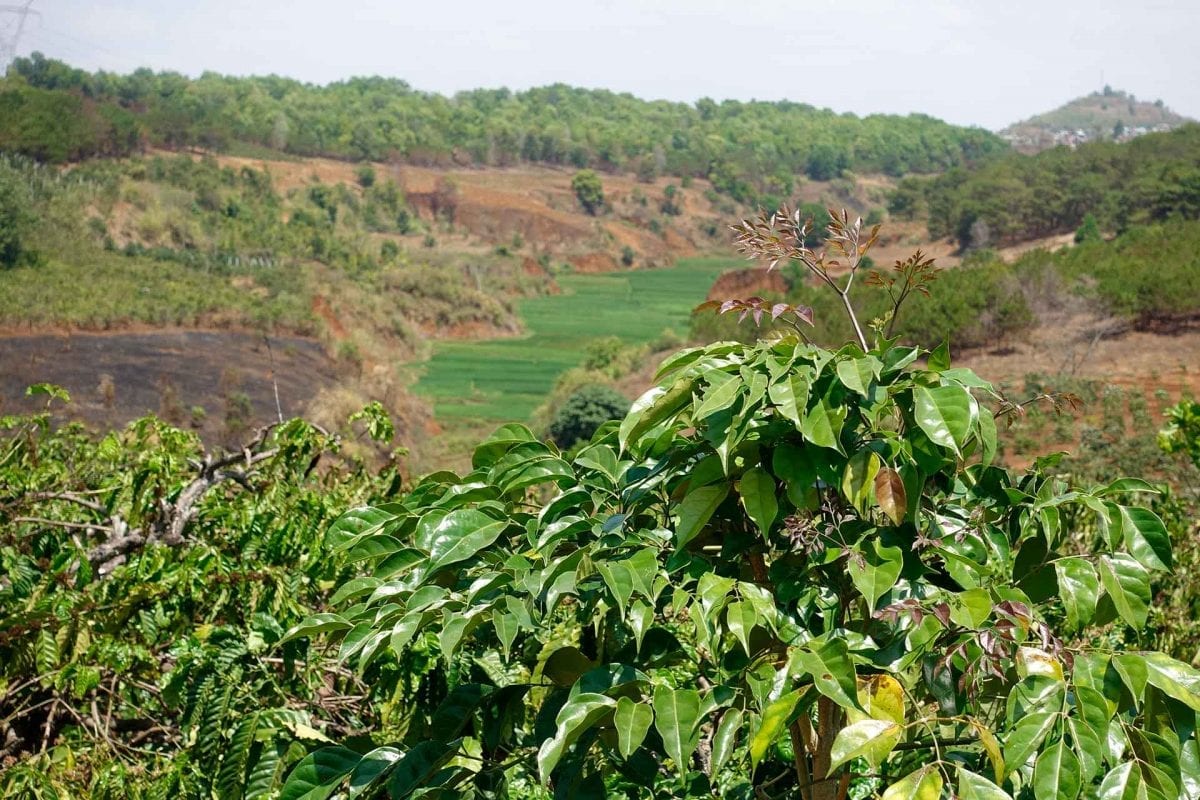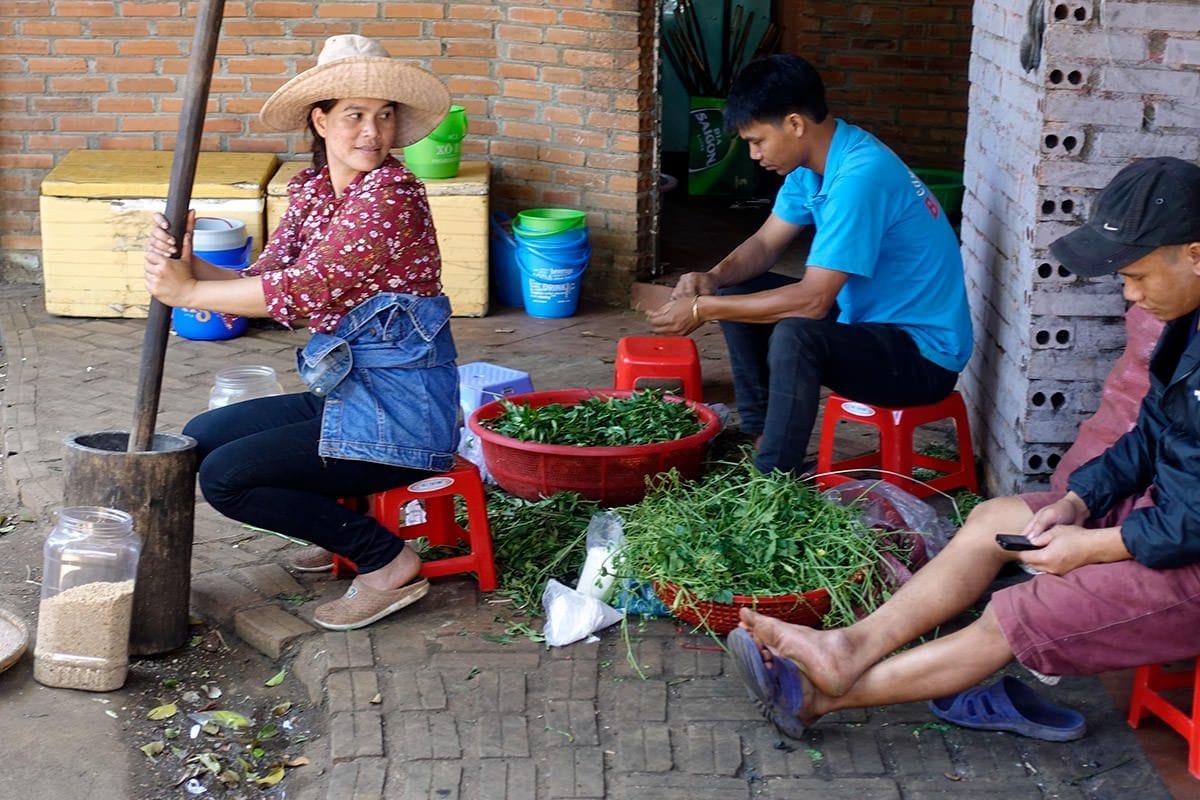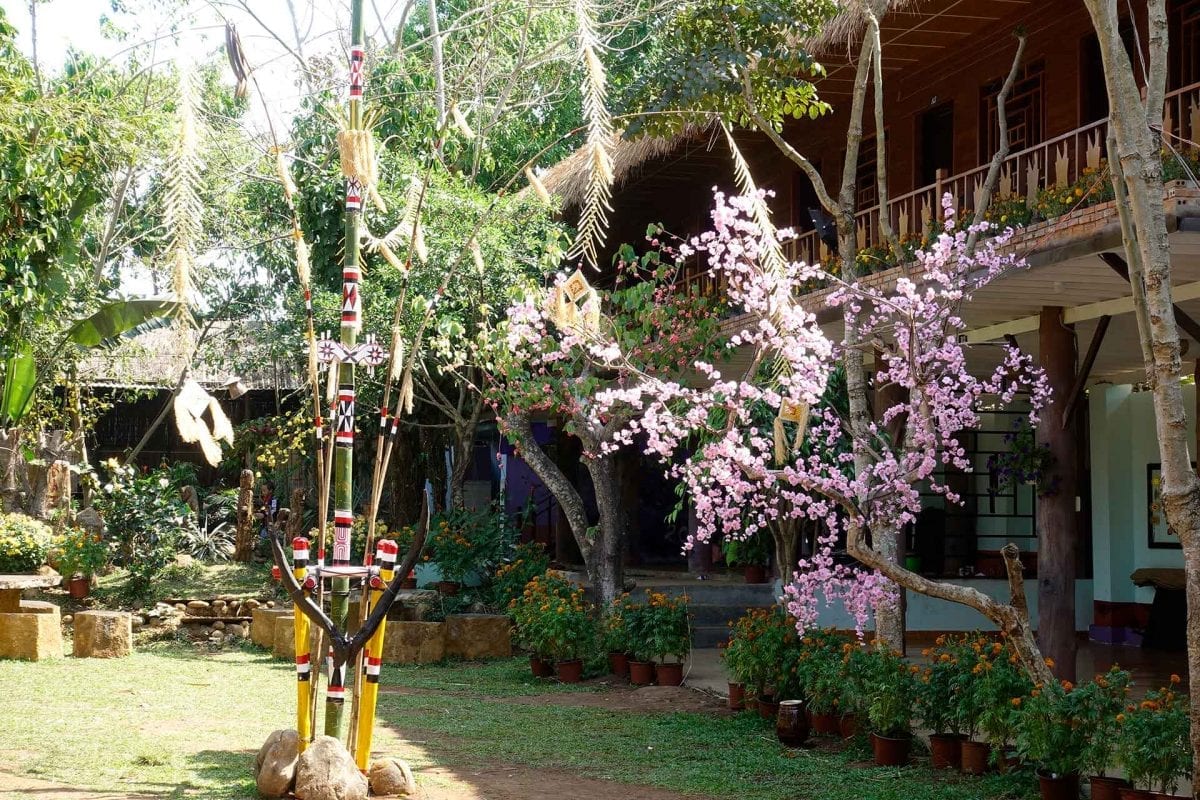Before we set off for the coffee mountains, we meet Dân, Thanh's wife. She equips us with caps for our trip so that the Vietnamese highland sun doesn't burn us Europeans too much. Then we can finally get started.
Thanh has organized a taxi for us from a taxi driver friend. Hiêu drives with us, while he and his wife follow us on a small scooter. During the trip, Hiêu entertains us with all kinds of anecdotes and facts about Coffee24 and the surrounding area. He tells us about the 15 people from his family and circle of friends who work for Coffee24, the "competitors" in the area who destroy the price and quality with monocultures and poor working conditions. The fertile volcanic soil, which in his opinion makes their coffee so special. Seldom has a car journey lasting several hours seemed so entertaining.
The road to the mountains: Watch out, it's about to get bumpy!
We had almost forgotten the real purpose of our trip when the driver warned us that it might get a little bumpy from now on. And he didn't promise too much. Potholes, low-hanging branches and steeply sloping roadsides accompanied us on the way up the coffee mountains. After a while the taxi had to give up because we were stuck. It is not the ideal means of transport at this altitude. Fortunately, we had almost made it up the mountain. "We'll walk the rest of the way," says Hiêu and storms ahead determinedly. In the meantime, Thanh and Dân had caught up with us and together we climbed the last incline, exhausted.

Coffee24 wants to give Vietnamese coffee the reputation it deserves
We are rewarded with a sublime view over the highland valley. Coffee fields and rice fields and the smiling sun above us. We seem to have stumbled upon a travel brochure for wild Vietnam without noticing. We immediately see why Hiêu and Thanh are so proud of their plantation. The location is perfect, the valley gets sun all day and not far away there is a natural irrigation facility. Our exhaustion is blown away. We want to get really close to the bean, or rather the flower, and see everything. Thanh warns us that the descent across the fields is quite steep and a little dangerous, but nothing can stop us now.
Coffee24 only uses natural fertilizers made from coffee beans and soybean shells
As we fight our way down through the coffee plants, we understand what Thanh meant this morning by natural plantations. While on industrial plantations the plants are sometimes trimmed to waist height, here the plants sometimes tower over us. They tower over us as tall as fruit trees. We head towards a small hut in the middle of one of the fields. Thanh wants to show us how the natural fertilizer for the plants is made. In the hut, he tells us, they store not only tools but also the ripe cherries until they are transported onwards. Unfortunately, it is not harvest time right now. The ripening period is 2-3 months between October and January every year. The natural fertilizer for the coffee plants is produced in large holes. Coffee bean/soybean shells and leftover coffee and rice are simply buried. After several months, the remains are dug up again and used as fertilizer. "These plant remains have all the nutrients we need for our plants to grow," Thanh explains, "without us having to resort to chemicals. We also make sure that the plants and beans do not come into contact with plastic. We only use traditional tools and machines made of metal and wood," he adds. "Our plantations are irrigated using a small waterfall and a fresh water source."






